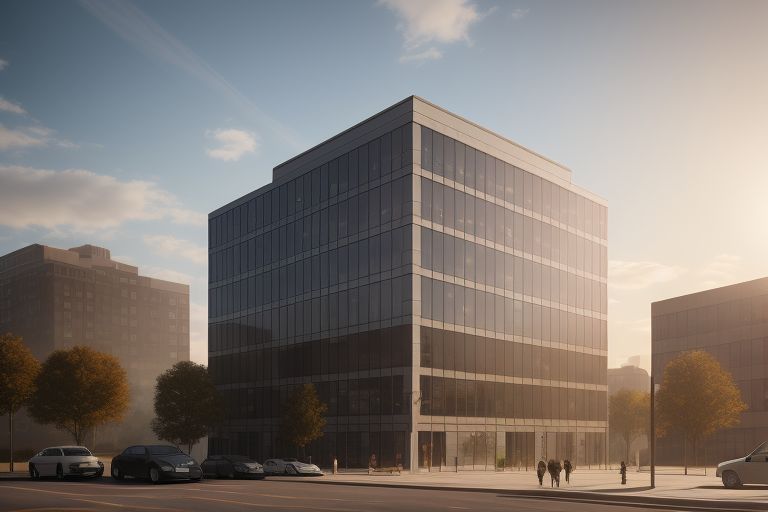- [email protected]
- +254 723 065019
- Mon - Sat 9:00 AM - 5:00 PM
- Login or Register
- Favorites
3.2 Passive Solar Design Techniques
Lesson 3.2: Passive Solar Design Techniques
Welcome to Lesson 3.2! In this segment, we will dive into the world of Passive Solar Design Techniques. Unlike active solar systems that rely on mechanical devices to collect and convert solar energy, passive solar design leverages the natural energy of the sun to heat, cool, and illuminate buildings without additional equipment.
Passive solar design involves strategic planning and thoughtful integration of architectural elements to optimize a building’s energy performance. By harnessing natural solar energy, we can significantly reduce reliance on mechanical systems, lower energy costs, and enhance overall building comfort.
In this lesson, we’ll cover key techniques and principles of passive solar design, including:
- The role of building orientation and layout in capturing solar energy.
- How thermal mass, window placement, and shading devices contribute to effective passive solar heating and cooling.
- Practical examples of passive solar design in real-world projects.
Understanding and applying these techniques will equip you with the skills to create more energy-efficient and sustainable buildings. Let’s explore how to harness the sun’s energy to its fullest potential!
Objective:
By the end of Lesson 3.2, learners will:
- Understand Passive Solar Design Principles: Gain a thorough understanding of the core principles behind passive solar design, including how the sun’s energy can be utilized to enhance building performance without mechanical systems.
- Learn Key Techniques: Explore specific passive solar design techniques, such as optimal building orientation, the use of thermal mass, strategic window placement, and effective shading strategies. Learn how these elements work together to regulate indoor temperatures and improve energy efficiency.
- Incorporate Techniques into Designs: Develop the ability to apply passive solar design principles in real-world building projects. Learn how to integrate these techniques into both new construction and renovation projects to maximize energy efficiency and sustainability.
- Recognize the Benefits: Understand the benefits of passive solar design, including reduced energy consumption, lower utility costs, and a smaller environmental footprint. Learn how these techniques contribute to overall building comfort and sustainability.
By mastering these objectives, you’ll be equipped to design buildings that effectively use natural resources, reducing dependence on artificial heating and cooling systems and promoting a more sustainable approach to construction.
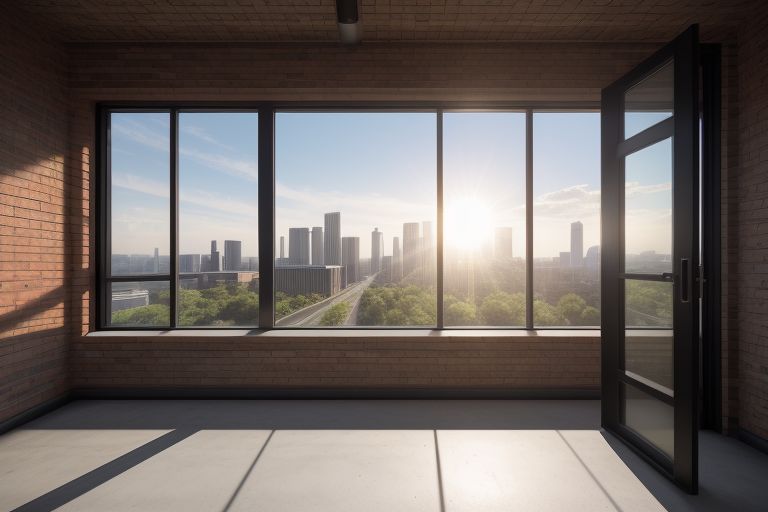
1. Introduction to Passive Solar Design
Welcome to the section on Passive Solar Design! This segment introduces you to a fundamental approach in energy-efficient building design that leverages natural solar energy to enhance building performance and reduce reliance on mechanical heating and cooling systems.
Passive solar design is based on the concept of utilizing the sun’s energy to maintain comfortable indoor temperatures throughout the year. Unlike active solar systems that use mechanical devices to collect and convert solar energy, passive solar design integrates solar energy directly into the building’s architecture and materials. By optimizing how a building interacts with the sun, passive solar design can achieve significant energy savings and environmental benefits.
Throughout this lesson, you will learn about the key principles of passive solar design, including how to:
- Harness Solar Energy: Understand how to strategically use the sun’s heat and light to regulate indoor temperatures.
- Optimize Building Orientation: Discover how positioning a building can maximize natural light and heat gain during colder months while minimizing overheating during warmer periods.
- Utilize Thermal Mass and Insulation: Explore how materials with high thermal mass can store and release solar energy to stabilize indoor temperatures.
- Implement Effective Shading: Learn about various shading techniques to control solar gain and enhance comfort.
Key Points:
Passive solar design leverages the sun’s natural energy to regulate a building’s temperature and lighting without relying on mechanical systems. This approach involves architectural and design strategies that maximize solar gain and minimize energy use through passive means.
a. Purpose:
The main goals of passive solar design are to:
-
- Reduce Energy Consumption: Passive solar design aims to decrease reliance on mechanical systems for heating, cooling, and lighting by utilizing the sun’s energy naturally. This approach effectively lowers the building’s overall energy use, leading to significant reductions in energy consumption.
- Decrease Greenhouse Gas Emissions: By minimizing the need for fossil fuels to power heating and cooling systems, passive solar design helps reduce greenhouse gas emissions. This contributes to a lower carbon footprint and supports broader environmental sustainability efforts.
- Enhance Indoor Comfort: One of the core benefits of passive solar design is the improvement of indoor comfort. By maintaining stable indoor temperatures and optimizing natural lighting, passive solar techniques ensure a more pleasant and comfortable living or working environment. This is achieved through thoughtful design strategies that balance solar gain and shading to create a comfortable indoor climate throughout the year.
b. Basic Principle:
Passive solar design strategies focus on capturing and utilizing solar energy effectively throughout the year:
Winter Months:
During colder months, passive solar design focuses on maximizing the capture and retention of solar heat to warm interior spaces naturally. Key strategies include:
-
- South-Facing Windows: These allow sunlight to enter and heat the building directly. In the Northern Hemisphere, positioning windows to face south can capture the most solar energy during winter.
- Thermal Mass: Materials like concrete or brick that absorb and store heat during the day can release it slowly during the night, maintaining a stable indoor temperature.
- Optimized Design Elements: Including features such as sunspaces or solar collectors can further enhance the building’s ability to harness and retain solar warmth.
Summer Months:
To prevent overheating during warmer periods, passive solar design minimizes excessive solar gain using various techniques:
-
- Shading Devices: Overhangs, awnings, and external shades can block high-angle summer sun while allowing lower-angle winter sunlight to penetrate.
- Strategic Window Placement: Positioning windows to reduce direct sunlight exposure in summer helps to prevent unwanted heat gain.
- Ventilation Techniques: Natural ventilation through operable windows, vents, and strategic building orientation can facilitate cooling and enhance air circulation, reducing the need for mechanical cooling systems.
By integrating these principles, passive solar design contributes to sustainable building practices, enhancing energy efficiency and comfort while reducing environmental impact.
Reflection Element:
Reflect on why passive solar design might be particularly advantageous in regions with significant seasonal temperature variations.
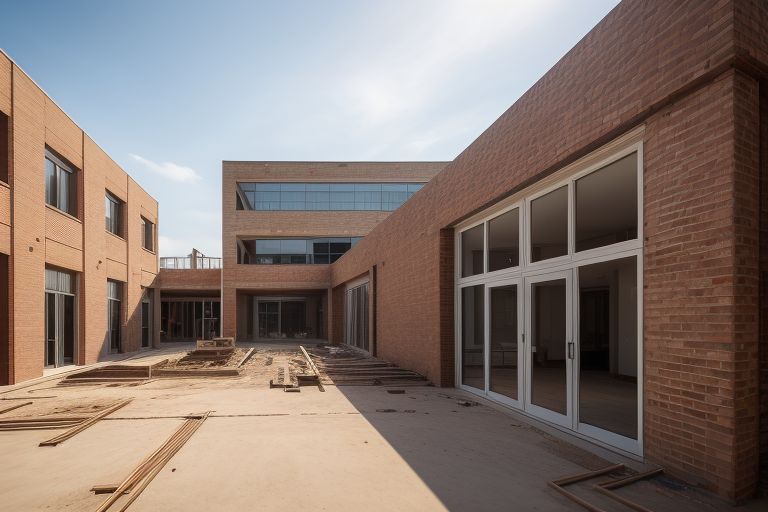
2. Key Principles of Passive Solar Design
Passive solar design is a sophisticated approach to harnessing the sun’s energy to enhance a building’s efficiency and comfort. By integrating specific design principles, buildings can effectively manage their heating, cooling, and lighting needs without relying heavily on mechanical systems.
This section will delve into the fundamental principles that guide passive solar design, providing a comprehensive understanding of how these strategies can be applied to achieve optimal energy performance and sustainability. We will explore concepts such as thermal mass, window placement, shading, and ventilation, and how each plays a crucial role in creating buildings that are both energy-efficient and comfortable year-round.
Key Points:
Passive solar design leverages natural energy flows to optimize a building’s energy performance. By adhering to several core principles, buildings can efficiently capture, store, and utilize solar energy throughout the year.
Here’s a closer look at these essential principles:
a. Solar Orientation and Building Placement
The way a building is positioned on its site has a profound impact on its ability to capture and utilize solar energy. Proper solar orientation is key to optimizing a building’s energy performance, as it influences how much sunlight the building receives throughout the day and across different seasons.
-
- Strategy: To maximize energy efficiency, orient the longest side of the building along the east-west axis. This design allows for optimal southern exposure in the Northern Hemisphere (or northern exposure in the Southern Hemisphere), ensuring that the building can harness the sun’s energy most effectively. This orientation facilitates the capture of low-angle sunlight during the winter months, which is essential for passive solar heating. Conversely, it helps minimize high-angle sunlight during the summer, reducing the need for cooling.
- Benefit: By positioning the building this way, you enable it to absorb ample sunlight during the colder months, reducing the need for additional heating and thus lowering energy costs. During the warmer months, the design helps to limit excessive solar gain, which can help keep the indoor environment cooler and reduce the demand for air conditioning. This balanced approach to solar orientation contributes to a more energy-efficient and comfortable building year-round.
b. Window Placement and Sizing
The strategic placement and sizing of windows are pivotal for effectively managing the flow of sunlight and heat within a building. Windows not only provide natural lighting but also play a critical role in the building’s thermal performance by influencing heat gain and loss.
Strategy:
-
- South-Facing Windows (Northern Hemisphere): Install larger windows on the south side to maximize solar heat gain during the winter months. This allows sunlight to penetrate deep into the interior, warming the space and reducing the need for mechanical heating.
- East and West-Facing Windows: Use smaller windows on the east and west sides to minimize unwanted heat gain during the summer. These windows receive intense sunlight at sunrise and sunset, which can lead to overheating. Smaller or strategically shaded windows can help control this excess heat and reduce cooling requirements.
Benefit:
Properly sized and positioned windows help balance the building’s heating and cooling needs. By optimizing window placement, you can harness natural solar energy for heating while minimizing excessive heat gain and glare during the warmer months. This balance leads to reduced overall energy consumption, enhancing both energy efficiency and indoor comfort.
c. Thermal Mass
Thermal mass refers to the ability of building materials to absorb, store, and later release heat. Materials with high thermal mass, such as concrete, brick, and stone, play a crucial role in stabilizing indoor temperatures by moderating temperature fluctuations throughout the day.
Strategy:
-
- Placement: Position thermal mass materials in locations where they can absorb direct sunlight, such as floors and walls exposed to the sun. This exposure allows the materials to absorb heat during the day.
- Heat Release: These materials will gradually release the stored heat during the cooler evening and nighttime hours. By placing thermal mass in strategic locations, it ensures that the heat retained during the day is effectively used to maintain a consistent indoor temperature.
Benefit:
Utilizing thermal mass helps to smooth out temperature variations within a building. By storing heat during the day and releasing it when temperatures drop, thermal mass reduces the need for mechanical heating and cooling systems. This leads to more stable indoor conditions and lowers energy consumption, contributing to overall energy efficiency and comfort.
d. Insulation and Air Sealing
Insulation and air sealing are essential components of passive solar design, as they significantly influence a building’s thermal performance. Effective insulation minimizes heat loss during colder months and prevents unwanted heat gain during warmer months. Air sealing ensures that gaps and leaks around windows, doors, and other openings are addressed, which helps to maintain a consistent indoor environment.
Strategy:
-
- Insulation: Use high-quality insulation materials in walls, roofs, and floors to create a thermal barrier that reduces heat transfer. Insulation materials should have high R-values to provide effective resistance to heat flow.
- Air Sealing: Identify and seal gaps and cracks around windows, doors, and other building openings using caulking, weatherstripping, and foam sealants. Proper air sealing prevents drafts and minimizes air leakage, which can compromise the efficiency of insulation.
Benefit:
Proper insulation and air sealing work together to maintain stable indoor temperatures by minimizing heat loss and gain. This reduces the demand on heating and cooling systems, leading to lower energy consumption and cost savings. By enhancing the effectiveness of passive solar design, these practices contribute to a more energy-efficient and comfortable building environment.
e. Shading Devices
Shading devices are integral to managing the amount of sunlight that enters a building, particularly in mitigating overheating during the summer months. They help regulate indoor temperatures by controlling solar gain, which can be crucial for maintaining energy efficiency and comfort.
Strategy:
-
- Overhangs: Install fixed overhangs or eaves that provide shade to windows during the high-angle summer sun while allowing the lower-angle winter sun to enter. This approach helps reduce solar heat gain in summer and enhances passive solar heating in winter.
- Pergolas: Use pergolas with climbing plants or shading fabrics to create shaded outdoor spaces. This can also reduce direct sunlight on windows and walls, helping to cool the building.
- Adjustable Shades: Incorporate adjustable shading devices, such as blinds, louvers, or external shading screens, that can be adjusted based on the time of year and the position of the sun. These devices offer flexibility to control the amount of sunlight entering the building throughout the day.
Benefit:
Shading devices effectively reduce excessive solar heat gain during warm months, helping to keep the building cooler and reduce reliance on air conditioning. They also allow for optimal solar gain during colder months, contributing to heating efficiency. By managing solar exposure, shading devices help achieve a balance between comfort and energy efficiency.
f. Natural Ventilation
Natural ventilation leverages natural air movement to cool and refresh indoor spaces without the use of mechanical systems. By designing buildings to enhance airflow, natural ventilation can significantly reduce the need for air conditioning and improve indoor air quality.
Strategy:
-
- Cross-Ventilation: Position windows and vents to facilitate cross-ventilation, where cool air enters through openings on one side of the building and warm air exits through openings on the opposite side. This can be achieved by aligning windows and vents with prevailing wind directions and creating openings at different heights to promote effective airflow.
- Openable Windows and Vents: Incorporate windows that can be opened easily, along with additional vents, to allow fresh air to enter and circulate throughout the building. Operable skylights and roof vents can also enhance ventilation by releasing hot air that accumulates near the ceiling.
- Design for Evening Cooling: Utilize natural ventilation strategies during cooler evening and night hours to cool the building. This can involve opening windows and vents to let in the cooler nighttime air and close them during the day to retain the cooled air inside.
Benefit:
Effective natural ventilation helps maintain comfortable indoor temperatures and reduces the reliance on mechanical cooling systems. This not only lowers energy consumption but also enhances indoor air quality and provides a healthier living environment by allowing for the natural exchange of air.
Reflection Element:
Reflect on how each principle could be practically applied in a local residential or commercial building.
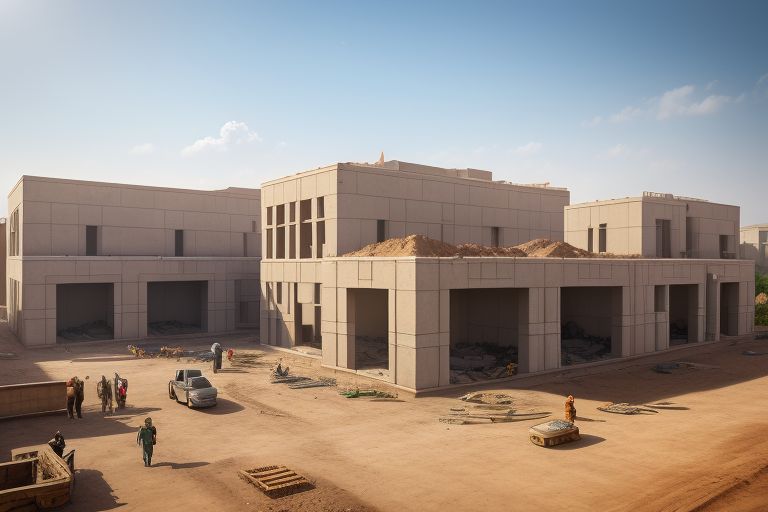
3. Passive Solar Design Techniques in Practice
Incorporating passive solar design techniques into actual building projects involves more than understanding theoretical principles; it requires practical application and strategic implementation. This section will explore how these design techniques are put into practice, showcasing real-world examples and methods for integrating passive solar strategies effectively.
By examining case studies and practical applications, you’ll gain insights into the successful implementation of passive solar design techniques and understand how they can be adapted to various building types and climates. Let’s delve into how these techniques translate from theory to practice, highlighting their impact on energy efficiency and overall building performance.
Key Points:
Explore various techniques that embody passive solar design principles and understand their practical applications in real-world scenarios:
a. Direct Gain
Direct gain is a passive solar design technique where solar energy is captured directly through large, south-facing windows. This method relies on thermal mass materials within the building to absorb and store the sun’s heat, which is then gradually released to warm the interior spaces.
-
- Implementation: To effectively implement direct gain, position large windows on the south side of the building to maximize solar exposure. Complement these windows with thermal mass elements—such as concrete, stone, or brick floors and walls—that can absorb and store heat during the day. The heat is then slowly released into the building as temperatures drop, helping to maintain a comfortable indoor environment.
- Example: In a residential home designed with direct gain principles, large south-facing windows are installed to capture sunlight. The home features a concrete floor that absorbs heat throughout the day as sunlight streams through the windows. As evening approaches and the outside temperature cools, the concrete floor releases the stored heat, providing a steady source of warmth and reducing the need for additional heating.
b. Indirect Gain (Trombe Wall)
Indirect gain systems, such as the Trombe wall, involve a thermal mass wall positioned behind a south-facing glass pane. This setup allows the wall to absorb solar heat during the day through the glass, and then slowly release this stored heat into the interior space after sunset.
-
- Implementation: To create an indirect gain system, build a dark-colored masonry wall, such as concrete or brick, directly behind glazing on the sun-facing side of the building. The dark color of the wall enhances heat absorption. During the day, the wall absorbs the heat transmitted through the glass. As temperatures fall in the evening, the thermal mass wall radiates the stored heat into the room, helping to maintain a comfortable temperature without relying on additional heating systems.
- Example: In a winter garden or sunroom, a Trombe wall can be installed to capture and store heat from the sun. On sunny days, the Trombe wall absorbs heat through the glass panels. As the sun sets and temperatures drop, the wall continues to release this stored heat, keeping the space warm throughout the night and reducing the need for supplementary heating.
c. Isolated Gain (Sunspaces and Greenhouses)
Isolated gain systems, such as sunspaces or greenhouses, capture solar heat in a dedicated area separate from the main living space. This heat is then transferred to the primary building as needed, helping to improve energy efficiency and comfort.
-
- Implementation: Design sunrooms or greenhouses with extensive glazing and thermal mass materials like concrete or tile floors. These spaces should be strategically located adjacent to the main living areas to facilitate heat transfer. During the day, the sunspaces or greenhouses collect and store heat from sunlight. This heat can be transferred to the main building through ventilation systems, doors, or other connections.
- Example: A residential sunroom designed with large south-facing windows and a thermal mass floor warms up significantly during the day. The stored heat is then transferred into the main house through open doors or ventilation openings, helping to maintain a comfortable temperature inside the home. This setup not only enhances the warmth and ambiance of the sunroom but also provides supplementary heat to the adjacent living areas.
d. Roof Ponds
Roof ponds are a passive solar design technique that uses water stored on the roof to absorb solar heat during the day. This heat is then gradually released into the building during the cooler nighttime hours, aiding in natural temperature regulation.
-
- Implementation: To create a roof pond system, install water storage tanks or specially designed pools on the roof, ensuring they have clear covers that allow sunlight to penetrate. The water in these ponds absorbs solar heat throughout the day. As temperatures drop at night, the stored heat is radiated into the building, helping to maintain a stable indoor temperature.
- Example: In a hot climate, a building features a roof pond designed with a clear cover to maximize solar heat absorption. During the day, the pond’s water cools the building through evaporation. As night falls, the water slowly releases the stored heat, helping to keep indoor temperatures moderate and reduce the need for additional cooling systems. This system enhances energy efficiency and improves comfort by leveraging natural temperature regulation.
e. Cool Roofs and Green Roofs
Cool roofs and green roofs are passive solar design techniques that improve building energy efficiency and comfort. Cool roofs reflect a larger proportion of sunlight and absorb less heat compared to traditional roofing materials, which helps in reducing indoor temperatures. Green roofs, on the other hand, incorporate vegetation on the roof to provide natural insulation and cooling through evapotranspiration.
-
- Implementation: To create a cool roof, use roofing materials with high reflectivity and low thermal absorption, such as reflective coatings or specialized cool roofing materials. For a green roof, install a layer of soil and vegetation on the roof, which helps to insulate the building and absorb rainwater, providing cooling through the natural process of evapotranspiration.
- Example: A commercial building with a green roof enjoys several benefits. The vegetation helps insulate the building, reducing the need for air conditioning and thereby lowering cooling costs. Additionally, the green roof contributes to improved energy efficiency by keeping indoor temperatures more stable and reducing the heat island effect in urban areas.
Reflection Element:
Reflect on how a building can successfully employ passive solar design techniques. Think about the strategies that could be used and their impact on the building’s energy efficiency.
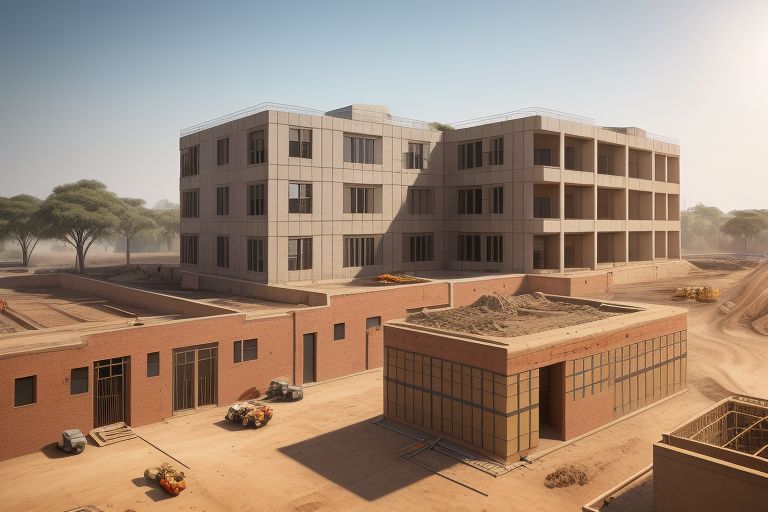
4. Benefits and Challenges of Passive Solar Design
Incorporating passive solar design principles into building projects offers numerous advantages, from reducing energy consumption to enhancing occupant comfort. By harnessing the natural energy of the sun, passive solar techniques can lead to significant cost savings and environmental benefits. However, implementing these designs also comes with its own set of challenges that need to be addressed to maximize their effectiveness.
In this section, we will explore the various benefits of passive solar design, including energy efficiency, cost savings, and improved indoor comfort. We will also discuss the challenges associated with passive solar strategies, such as initial costs, site-specific constraints, and design complexities. Understanding both the benefits and challenges will equip you with the knowledge needed to make informed decisions when integrating passive solar design into your projects.
Key Points:
a. Benefits:
1. Reduces Energy Bills and Environmental Impact:
By optimizing the use of natural solar energy, passive solar design minimizes reliance on artificial heating, cooling, and lighting. This leads to lower energy consumption and, consequently, reduced utility bills.
-
- Impact: Decreased energy use translates to fewer greenhouse gas emissions, supporting environmental sustainability and reducing the building’s overall carbon footprint.
- Example: A well-designed passive solar home can cut heating and cooling costs by up to 50% compared to conventional homes.
2. Enhances Indoor Comfort and Air Quality:
Passive solar design improves indoor climate control by maintaining stable temperatures and maximizing natural light. This contributes to a more pleasant and healthy indoor environment.
-
- Impact: Stable temperatures reduce the need for additional heating and cooling, while enhanced natural ventilation improves air quality and comfort.
- Example: Buildings with well-placed windows and thermal mass often experience less temperature fluctuation, creating a consistently comfortable living space.
3. Low Maintenance Compared to Active Solar Systems:
Unlike active solar systems, such as photovoltaic panels or solar water heaters, passive solar design systems have fewer moving parts and require less ongoing maintenance.
-
- Impact: This can lead to lower maintenance costs and reduced long-term operational concerns.
- Example: A building with integrated passive solar design elements, like thermal mass and proper insulation, requires less upkeep compared to a building with active solar heating systems that need regular servicing.
c. Challenges:
1. Requires Careful Planning and Design:
Effective passive solar design demands thorough planning and precise design to ensure that solar energy is harnessed efficiently. This often involves advanced knowledge and expertise.
-
- Impact: The complexity of integrating passive solar techniques into building designs can necessitate the involvement of experienced professionals, potentially increasing project costs and time.
- Example: Designing a building to maximize passive solar benefits involves detailed calculations and adjustments for factors such as sun angles, building orientation, and local climate conditions.
2. Initial Costs for Materials May Be Higher:
The upfront costs for high-performance materials such as specialized windows, thermal mass materials, and advanced insulation can be higher compared to conventional building materials.
-
- Impact: These initial expenses can be a barrier for some projects, though they are often offset by long-term energy savings.
- Example: Investing in double-glazed windows or high-quality thermal mass materials requires a higher initial investment but results in significant energy savings over time.
3. Effectiveness Limited by Climate, Building Orientation, and Surrounding Structures:
The success of passive solar design is influenced by factors such as local climate, the building’s orientation, and the presence of surrounding structures that may obstruct sunlight.
-
- Impact: In regions with less consistent sunlight or unfavorable site conditions, the effectiveness of passive solar strategies may be diminished.
- Example: A building located in a densely shaded area or in regions with predominantly cloudy weather may not benefit as much from passive solar design as a building in a sunny location with optimal orientation.
Reflection Element:
Reflect on common barriers to implementing passive solar design, and how they can be overcome.
Congratulations on completing Lesson 3.2: Passive Solar Design Techniques! You’ve now explored the fundamental principles and practical applications of passive solar design, understanding how these techniques can harness the sun’s energy to enhance building performance. By incorporating these strategies, you’re not only contributing to a more sustainable environment but also improving indoor comfort and reducing energy costs.
As we move forward, we’ll shift our focus from passive strategies to the realm of active solutions. Understanding how to integrate advanced energy-efficient systems and technologies will complement your knowledge of passive solar design and help you create even more efficient and sustainable buildings.
In Lesson 3.3, we will delve into the world of energy-efficient systems and technologies that can further enhance the performance of buildings. From cutting-edge HVAC systems to innovative lighting solutions and advanced control technologies, this lesson will cover a range of systems designed to optimize energy use and minimize environmental impact. You’ll learn how these technologies work, their benefits, and how they can be integrated into your designs to achieve greater efficiency and sustainability.
Get ready to explore the tools and systems that bring energy efficiency to the next level and see how they can complement the passive strategies you’ve already studied. Let’s dive into Lesson 3.3 and discover how to integrate these technologies effectively into building projects!

